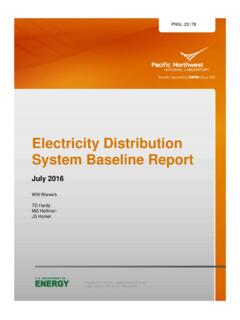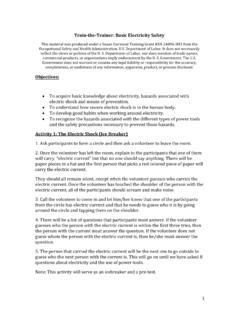Transcription of Methodology For Electricity Tariff Calculation For ...
1 Methodology For Electricity Tariff Calculation For Different Activities EU- INOGATE programme Project: Support to Energy Market Integration and Sustainable Energy in the NIS (SEMISE) The content of this report is the sole responsibility of the contractor and can in no way be taken as reflecting the views of the European Union Table of Contents 1. EU AND NIS EXPERIENCES OF Tariff REFORM 3 Cost Basis for Tariff Setting 3 Varying European Approached to Tariffs 4 Transmission Pricing Examples 5 Distribution system Pricing Examples from the EU 6 Methodology For Electricity Tariff Calculation For Different Activities Page 3 of 8 1.
2 EU AND NIS EXPERIENCES OF Tariff REFORM It is important to note that among the EU Member States, Tariff -setting for vertically integrated monopolies is regulated and cannot be separated from a regulatory authority whose function is to formulate a Tariff Methodology and approve tariffs submitted by the utilities within that Methodology . The EU as a body does not generally proscribe the manner of Tariff Calculation for the various Member State utilities and Section 4 below details the many and varied ways in which tariffs are formulated and regulated across the EU Member States. While the form of the Tariff differs widely, what the EU has provided is the legislative framework on which such developments are ultimately based.
3 Specifically, a Directive was promulgated in 1996 (The Electricity Directive) which set out the agreed objectives of reform, guidelines for their implementation and targets by which they were to be Cost Basis for Tariff Setting Generally in the EU, an integral part to setting a Tariff is the method for allocating costs across categories of users. Unless the costs to be recovered are allocated appropriately then the Tariff structure for an individual customer category cannot achieve cost reflectivity. The EC Commission as part of its overall review of the progress towards the liberalisation of the energy sector and the creation of an internal market examines the costing methods used for class allocation and Tariff design in the Electricity generation, transmission sub-sectors.
4 There are broadly at least three approaches to Tariff setting identifiable in the EU. These are: a. Average Historical Cost Approach The average historical cost approach entails taking the expenses actually being incurred or allowed by the energy regulator and a return on capital invested in the past as a starting point. This bucket of revenue is classified as being related to demand, energy consumption, and number of customers being served. The classified costs are then allocated across the various customer classes based on measures of their demand, energy use, and customer counts. The classified and allocated costs are then converted to Tariff charges by dividing the identified costs of customer group categories by billing units ( kWh, customer-months).
5 B. The Average Reproduction Cost The average reproduction cost approach modifies the average historical cost approach by adjusting assets values to reflect the cost of replacement. The revaluation affects the return on asset base, but not the depreciation charges. c. The Marginal Cost approach The marginal cost approach is a forward-looking process that estimates the change in the cost of producing or delivering energy in response to a small change in customer usage. In many systems, the marginal cost of generation will be the market price. The marginal cost of transmission however, is a function of: Congestion and losses reflected in locational marginal prices although these are not included in all EU Member States; and The annualised cost of incremental investment needed to accommodate load Methodology For Electricity Tariff Calculation For Different Activities Page 4 of 8 growth.
6 The marginal cost of distribution is the annualised cost of incremental local facilities needed to connect customers and the annualised cost of higher voltage facilities needed to accommodate increased use by many customers. The output from a marginal cost study is unit marginal costs, per kWh by time period, per kW and per customer. These unit costs can be used to compute the marginal cost revenues (the marginal unit costs multiplied by units expected to be sold) by customer category and in total. Since total marginal revenue does not necessarily match the allowed revenue requirement, adjustments must be made to cover any positive or negative gap.
7 The adjustment can be proportional (so that all classes are allocated the same percentage of their marginal cost revenues) or on a differential basis that takes other factors into account. As applied to the generation sector, the cost of building power generation capacity is a stock concept, marginal cost (and more usually, long-run marginal cost) is a flow concept which relates to the cost per period of producing an additional kWh. Peak load pricing is a system of price discrimination whereby peak time users pay higher prices to reflect the higher marginal cost of supplying them. There are two benefits from adopting peak load pricing: Peak time users pay for the higher marginal costs that they impose on the system ; Those users who would not mind consuming at a different time (for example, residential customers who can use Electricity at a different time when marginal costs are cheaper) are induced by cheaper prices to switch to consuming at off-peak times.
8 By spreading total daily consumption more evenly, BT reduces the peak in demand and has to devote less resources to building new power stations whose number is determined by peak usage. In some cases regulators can use a hybrid approach, which uses a combination of marginal and average allocation of costs. For example, average historical costs could be used to allocate the revenue requirement to customer categories (eliminating the need to close the marginal cost revenue gap at the class level) and marginal costs could be used for Tariff design within a category (with the gap closing done at the Tariff component level).
9 Varying European Approached to Tariffs There is no single uniform approach to tariffs in the EU nor a specific Tariff -setting Methodology that is uniformly applied throughout. There is no clear tendency towards a preferred network-pricing model in Europe for example in the application of different cost concepts and there are varying approaches for transmission and distribution. The lack of uniformity is itself a function of the different physical properties of Electricity transmission and distribution systems in the EU and the different scope of provided services provided by utility companies. In order to highlight the diversity of Tariff options, the next sections of this report provide an overview of some of the key variations what apply to Tariff -setting in the transmission and distribution networks between a number of EU Member States.
10 In general however, tariffs among the EU Member States are composed of the following elements: Locational pricing (use-of- system , point-to-point, postage stamp or zonal); Marginal or average cost pricing; Methodology For Electricity Tariff Calculation For Different Activities Page 5 of 8 Standing charges; Capacity/demand charges; Time of Use charges; Energy charges. The following section examines some of the variations in Tariff elements through different functions and across a selection of EU Member States. Transmission Pricing Examples Locational or Non-locational Pricing UK Locational or use-of- system (UoS) charges are based on investment cost-related pricing (ICRP); Norway Locational charges based on short-run marginal costs (SRMC); Germany no locational charges but demand and energy charge by voltage level; Greece zonal charges; Spain energy and demand charge; Locational elements in UK, Ireland, Norway; No locational elements present in Germany and Spain.


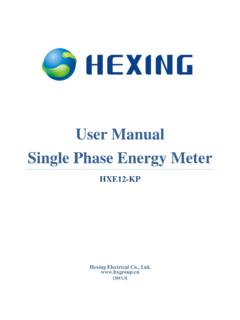

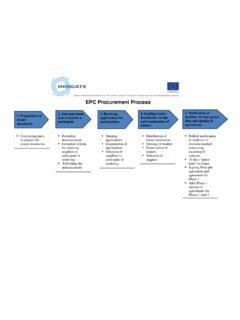

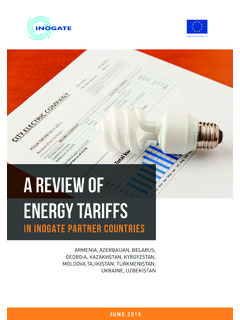

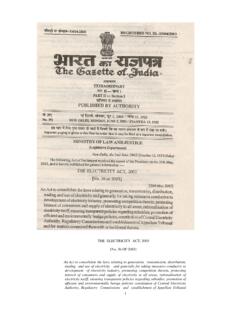
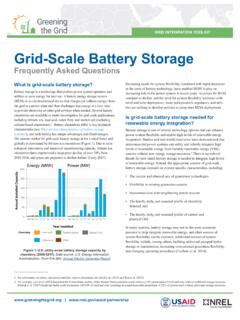
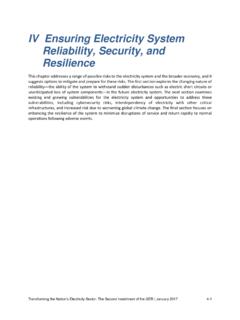
![Electricity Regulation Act [No. 4 of 2006]](/cache/preview/6/a/5/5/a/0/d/5/thumb-6a55a0d556b9c34cf91d66ae31989ed3.jpg)
